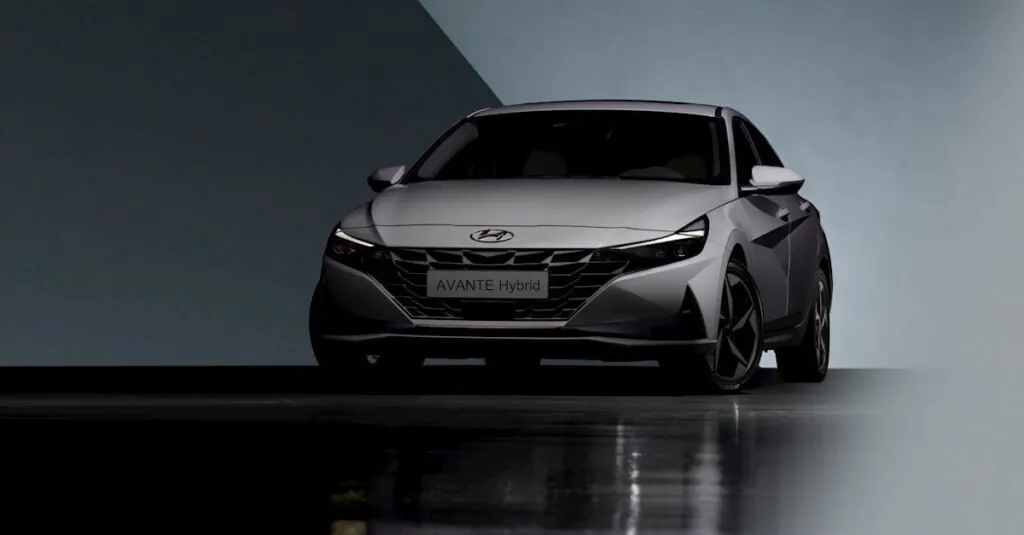Table of Contents
ToggleElectric vehicles are zooming into the fast lane, and smart grids are the trusty co-pilots ensuring a smooth ride. As the world shifts gears towards sustainable energy, the marriage of these two technologies is like peanut butter and jelly—perfectly paired for a greener future. Imagine a world where your car not only takes you places but also chats with the power grid to optimize energy use. It’s not science fiction; it’s happening right now!
Overview of Electric Vehicles and Smart Grids
Electric vehicles (EVs) represent a significant shift in transportation, contributing to reduced carbon emissions and reliance on fossil fuels. Smart grids enhance the efficiency of electricity distribution by leveraging digital technology. Together, these systems form a synergy that supports a more sustainable energy landscape.
With advanced communication capabilities, EVs can interact with smart grids. This interaction allows for real-time data exchange, enabling optimized energy usage and demand response strategies. consumers can charge their vehicles during off-peak hours when electricity rates are lower. This behavior balances grid load and minimizes strain on the energy system.
Smart grids monitor energy flows, ensuring stability and reliability. These grids incorporate renewable energy sources, making it feasible for EVs to charge with cleaner energy. Brighter energy management occurs through smart meters and sensors, providing insights into consumption patterns.
The integration of EVs into smart grids creates opportunities for vehicle-to-grid (V2G) technology. This technology allows EVs to supply energy back to the grid during peak demand periods, enhancing grid resilience. Stakeholders can benefit from this collaboration, as it promotes cost savings and encourages renewable energy deployment.
Adopting this innovative approach supports the transition towards greener cities. Cities can reduce congestion and improve air quality by promoting EV usage. This collaborative framework fosters sustainable development and prepares communities for the future energy landscape.
The Role of Electric Vehicles in Energy Transition
Electric vehicles (EVs) significantly contribute to the energy transition, emphasizing sustainability and energy efficiency. By integrating with smart grids, EVs enhance overall energy management and lower carbon footprints.
Environmental Benefits
EVs reduce greenhouse gas emissions by replacing traditional gas-powered vehicles. Their operation relies on cleaner electricity sources, which further decreases reliance on fossil fuels. Studies show that when coupled with renewable energy, EVs can minimize carbon emissions significantly. Smart grids facilitate this relationship by optimizing energy flow from renewable sources to EV chargers. The result is cleaner air and improved urban environments, which directly benefits public health.
Economic Impacts
Investing in EV technology and infrastructure creates numerous economic opportunities. The growth of the EV market fosters job creation in manufacturing, maintenance, and energy sectors. Furthermore, consumers save money through reduced fuel costs and lower maintenance expenses associated with electric vehicles. Smart grids enhance energy efficiency, leading to cheaper electricity rates. Reports indicate substantial savings during off-peak charging times, appealing to budget-conscious consumers. Ultimately, the economic advantages of EVs support a sustainable energy landscape, driving the transition toward a greener future.
Smart Grids: An Essential Component
Smart grids play a vital role in the integration of electric vehicles and energy management systems. These advanced networks enhance electricity distribution and support the evolving power demands from increased EV usage.
Definition and Functionality
Smart grids represent modern electrical supply systems that use digital technology for bidirectional communication. They allow real-time monitoring of energy flow, increasing efficiency and reliability. Energy providers can manage loads effectively, integrating renewable energy sources seamlessly. Enhanced data exchange means consumers can schedule EV charging during off-peak hours, reducing overall costs. Environmentally, smart grids facilitate cleaner energy use while maximizing grid stability, ultimately driving down carbon emissions.
Technology Integration
Technology integration within smart grids is instrumental for efficient energy management. Advanced sensors, smart meters, and communication technologies enable accurate monitoring of electricity consumption. They foster dynamic adjustments to changing energy needs and incorporate predictive analytics. Vehicle-to-grid technology exemplifies this integration, enabling EVs to provide energy during peak demand. This interaction supports energy distribution while balancing the grid load. As a result, technology advancements within smart grids significantly enhance sustainability and economic viability in the energy sector.
Synergies Between Electric Vehicles and Smart Grids
The integration of electric vehicles and smart grids creates numerous benefits, enhancing energy efficiency and sustainability. Their combined capabilities foster innovation in energy management, significantly impacting the environment and economy.
Vehicle-to-Grid Technology
Vehicle-to-grid technology allows electric vehicles to feed energy back into the grid during peak demand. This exchange benefits both consumers and utilities, as it encourages renewable energy use and balances load. Vehicles equipped with this technology can store energy when demand is low and release it when needed. Consequently, EV owners also gain financial rewards by participating in energy markets. Reports suggest V2G systems could contribute to 25% of grid energy storage needs by 2030, showcasing their importance in energy strategy.
Load Balancing and Demand Response
Effective load balancing ensures that energy supply meets demand without overloading the grid. Smart grids, through real-time data, enable utilities to adjust energy distribution based on usage patterns. Consumers can participate in demand response programs, which shift their energy-intensive activities to off-peak times. Such practices lead to cost savings for households and reduced strain on resources. Studies indicate that widespread implementation of load balancing strategies could lower electricity costs by 20% during peak hours, significantly benefiting the public.
Challenges and Opportunities
Electric vehicles and smart grids present unique challenges and significant opportunities in the pursuit of sustainable energy. Addressing these complexities requires attention to both infrastructure and regulatory frameworks.
Infrastructure Requirements
Infrastructure acts as a backbone for the integration of electric vehicles and smart grids. Charging stations must be widely available to meet the growing demand for EVs; studies suggest that approximately 1 million public charging points could be necessary by 2030. Upgrading existing electrical grids involves installing advanced technologies like smart meters and sensors, which enhance operational efficiency. Collaborating with utility companies ensures sufficient capacity to support EV charging without overloading systems. Implementing robust maintenance strategies helps prevent outages and ensures consistent energy availability, facilitating seamless interaction between EVs and the grid.
Policy and Regulation
Policy and regulation play crucial roles in shaping the future of electric vehicles and smart grids. Governments can incentivize EV adoption and smart grid investments through tax credits and subsidies, improving cost-effectiveness for consumers. Establishing clear regulations regarding charging infrastructure promotes standardized practices across regions. Furthermore, supporting vehicle-to-grid (V2G) technology through favorable legislation encourages innovation in grid management. Effective policies addressing renewable energy integration support cleaner charging options for EVs, enhancing sustainability and energy independence over time. Stakeholders must work together to create a cohesive regulatory environment that fosters growth and ensures energy equity.
The integration of electric vehicles and smart grids represents a pivotal shift toward a sustainable energy future. This synergy not only enhances energy efficiency but also promotes cleaner air and reduced greenhouse gas emissions. As technology advances and infrastructure improves, the potential for vehicle-to-grid systems to contribute significantly to energy storage becomes increasingly apparent.
Investments in this sector can drive job creation and economic growth while offering consumers substantial savings on fuel and maintenance costs. With supportive policies and collaboration among stakeholders, the path to a greener and more efficient energy landscape is clear. Embracing this innovative partnership will ultimately lead to a more resilient and sustainable energy system for all.




